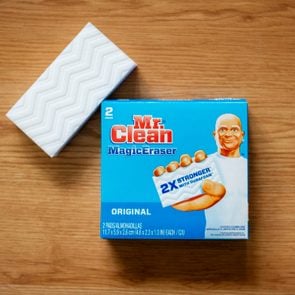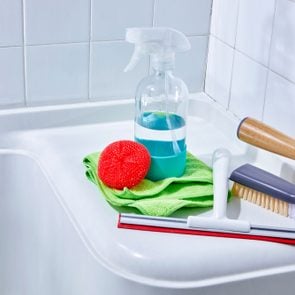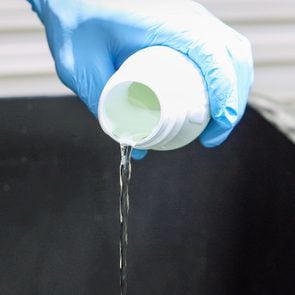How to Use a Mr. Clean Magic Eraser for a Sparkling Home
Updated: Apr. 18, 2024
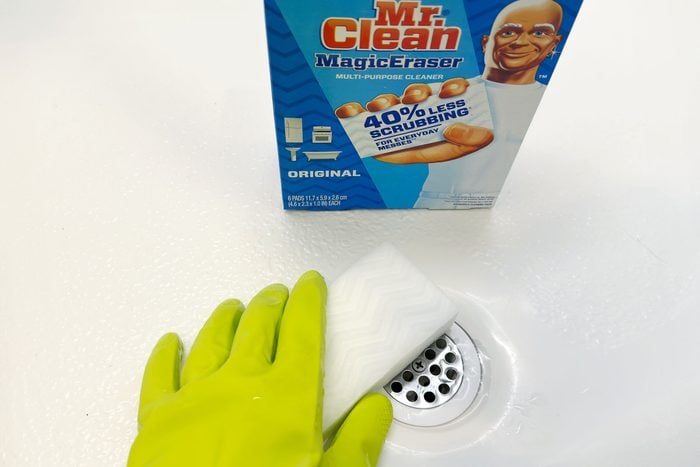
Curious about cleaning with this magical mystery sponge? Our experts explain what it is and how to use a Magic Eraser like a total pro.
Household cleaning products often have flashy names indicating how well they clean, but in the case of Mr. Clean Magic Erasers, it’s not hyperbole. These unassuming, flexible chunks of foam really do work like magic. If you don’t know how to use a Magic Eraser, you’ll be pleased to learn that it couldn’t be easier: Wet it, wipe it and watch the grime and stuck-on food vanish.
Cleaning with Magic Erasers “is a physical removal process, not a chemical one,” says William F. Carroll Jr., PhD, an adjunct professor of chemistry at Indiana University. When you rub the Magic Eraser (or generic equivalent) on your kid’s impromptu crayon mural, for instance, tiny threads of melamine resin get down into the grooves and pores of the surface of the wall in a way that sponges and rags just can’t match.
So what are these grime erasers made of, and how do you use them all over the house? To find out, Reader’s Digest talked to Carroll and pro cleaner Dan Deonarain, the owner of Galaxy Maids residential and commercial cleaning services, who uses the product all the time. Ahead, they explain exactly how to clean with these magical sponges.
Get Reader’s Digest’s Read Up newsletter for more cleaning, humor, travel, tech and fun facts all week long.
About the experts
Reviewed for accuracy by: Ann Russell, TikTok’s “cleaning auntie” and the author of How to Clean Everything. |
What are Magic Erasers?
Mr. Clean Magic Erasers start as melamine resin, a soft and pliable material that hardens into a very sturdy plastic that’s often used in dishware. But instead of making dishes, the scientists behind Magic Erasers introduce tiny bubbles, which puff up the resin into a foam. (If you’ve used gel shaving cream that becomes a foam, Carroll says it’s a similar effect.)
As this new substance hardens, the bubbles evaporate, leaving behind the hard plastic resin matrix around tiny air pockets. To get an idea of what this looks like on the surface of the foam, Carroll says to picture a plastic mesh kitchen scrubber—but on a microscopic level.
How to use a Magic Eraser
Magic Erasers clean by friction, so if you can wipe down the bathtub, you can clean with a Magic Eraser. Here’s what to do:
- Wet it first. “Magic Erasers are designed to be used with water,” Deonarain says. “Using it dry will make it very abrasive to the surface you are cleaning and will most likely lead to damaging the Magic Eraser pad.” Wet the sponge, then squeeze out the excess water before cleaning.
- Wear gloves. Deonarain says Magic Erasers are safe to touch, but he advises protecting your hands for all cleaning projects. “Always use gloves when cleaning, and this remains the precaution when using Magic Erasers,” he says.
- Spot test. Even though Magic Erasers feel soft and pliable, at the microscopic level, they’re more akin to sandpaper. Always test a small, inconspicuous area before applying to visible surfaces.
- Apply light pressure. Once you know it’s safe to use a Magic Eraser on the surface, rub the stain, sticker or other residue you’re cleaning with light pressure to start. Use more muscle if needed, but check the spot frequently. Use the corner or edge of the eraser to get into crevices.
- Add a cleaner. Water and Magic Erasers should get the job done, Deonarain says, but “for tough stains, you can use them in pairing with another cleaning solution,” like vinegar or dish soap. Of course, the cleaner must be safe for the surface, so spot test first.
- Rinse. Once the surface is clean, wipe it down with a damp cloth, especially if it will have contact with food. Rinse the Magic Eraser in clean water, squeeze out the excess liquid and store the product in a clean, dry place until your next use.
- Reuse. As you scrub, the eraser will get smaller and smaller as the resin matrix sloughs off due to friction. Don’t be alarmed. This is how they’re supposed to work. Reuse Magic Erasers as long as it’s efficient, or save small chunks for delicate tasks.
14 ways you can clean with a Magic Eraser
Once you know how to use Magic Eraser, there’s no telling what you’ll be inspired to clean. Not sure where to start? Below, we’ve rounded up 14 great ways to keep your home spick-and-span with the sponge. Remember, always test a small, out-of-sight area before scrubbing visible surfaces, especially if you’re not sure how the surface will react.
Remove soap scum
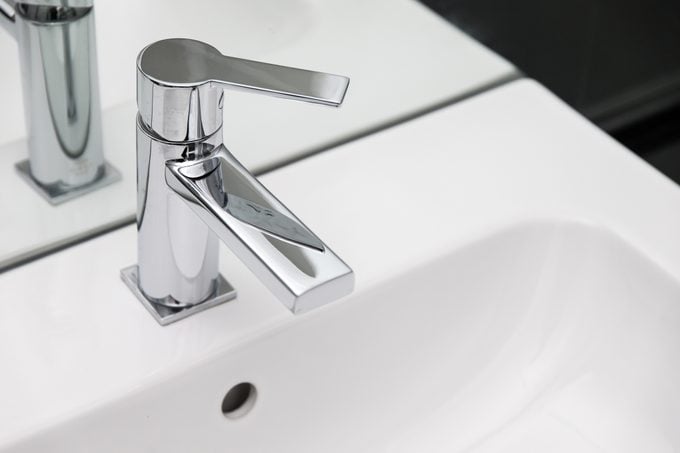
Deonarain says the bathroom is the perfect place for the Magic Eraser, particularly if you’re fighting soap scum. Soap scum is a byproduct of the fatty acids in soaps and other cleaning agents interacting with minerals in hard water. The resulting residue can make the surfaces in your bathroom appear dingy and covered with film. When cleaning your bathroom, use the Magic Eraser on tubs, sinks, toilets, tile and faucets to keep soap scum at bay.
Scrub tile and grout
We know you can use Magic Erasers on tile, but what about the often-grubby grout surrounding it? Yes, you can scrub grout with a Magic Eraser, but be prepared for it to shred a little faster than normal. Grout is a mixture of water, cement and sand, and it’s tough, with lots of bumpy, rocky nooks and crannies. You may want to start with a standard scrub brush, then swoop in with the Magic Eraser for tougher stains.
Scour the stovetop
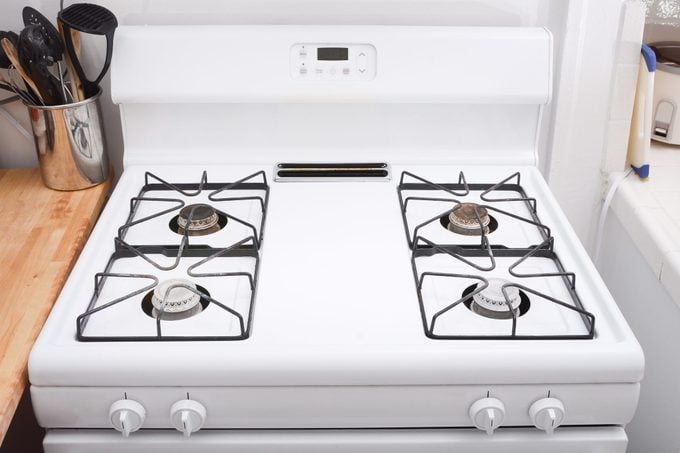
It’s always best to clean the kitchen right after cooking your meals. (Well, you can eat first.) Leaving food splatters to harden on your stovetop makes them much more difficult to remove. You can use Magic Erasers on many cooktops, including glass, but always test a small area first. And avoid using a Magic Eraser on a stainless steel stovetop—and all stainless steel appliances for that matter.
| ♦ Pro Tip |
| When scrubbing around the stove, keep your Magic Eraser off the countertop, especially if it’s coated with a sealant, as natural stone often is. |
Erase crayon marks
Walls, floors, cabinets and glass coffee tables look like blank canvases to industrious little artists with fistfuls of greasy, waxy crayons. Some cleaners break down those waxy bonds, but it takes elbow grease, and you may just smear the crayon around. Magic Erasers are safe to use on nonglossy painted walls, laminate cabinets, glass and some flooring materials, but always test first. Don’t use them on bare, polished or varnished wood or anything with a high-gloss finish or sealant, Deonarain says.
Scrub away old paint splatters
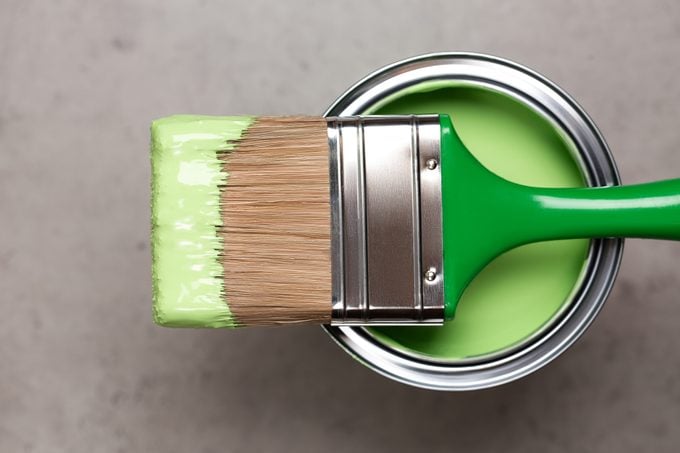
Paint is no match for a Magic Eraser, according to Deonarain. If you went a little outside the lines on your last painting project, wet and squeeze a Magic Eraser sponge and remove the excess paint from light switch plates, door hinges, walls and concrete. It’ll take off stray nail polish too, but never use it on your skin, if that’s where the paint landed. Magic Erasers can irritate your skin and cause abrasions.
Get rid of hard-water rings in toilets
Hard-water stains are unsightly, but Magic Erasers can make those crusty rings disappear. Put on some gloves, wet the sponge and start scrubbing the toilet. Just don’t expect miracles, says cleaning expert Ann Russell, author of How to Clean Everything. “In cases such as limescale, a melamine sponge might not be the most efficient way to remove things,” she says. “They’re good—but not miraculous.”
If you’ve seen something on the internet about dropping a Magic Eraser into the toilet or tank, don’t do this. You’re flushing money down the toilet. Magic Erasers are physical removal tools, and while they’re easy to use, they do require your input (aka elbow grease) to work.
Remove scuff marks from shoe soles
Grass stains on your sneaks? Grab a Magic Eraser and get to cleaning. It works like a dream on the rubber sole and toe box, but try a small area before you go to town on the uppers. Magic Erasers are deceptively abrasive, and microscopic scratches could be visible on darker materials, particularly leather. Use light pressure to be safe, and check frequently to make sure you’re cleaning, not damaging, your shoes.
Clean shower doors and curtains
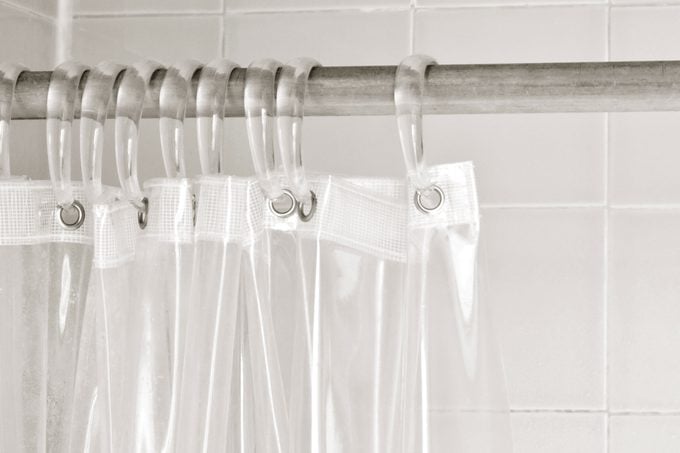
Keeping shower doors clean is hard, even if you squeegee after each use. And if you’ve ever tried to wash a grimy, moldy shower curtain, you’d be forgiven for just chucking the whole thing in the trash. Enter the Magic Eraser. Use it on shower doors and curtains to remove not only soap scum but also hard-water spots, dried shampoo and conditioner blobs, rust and mildew stains.
Remove sticker residue
Soap, heat, scrapers and even paint thinner are all great ways to remove sticker residue, but the Magic Eraser is right there under your sink, and it’s easy, clean and quick. Remove stickers from coffee mugs and other dishes, toys, planters, clay pots and storage containers. The abrasive foam easily lifts the residue away.
Scrub inside your fridge or microwave
Out of sight, out of mind, right? If it’s been a while since you scrubbed your fridge shelves or cleaned your microwave, a Magic Eraser can help. Wet it down and give the insides a quick swipe, or take everything out and really get in there and scrub. Deonarain says Magic Erasers shouldn’t be used on stainless steel, so keep the erasing confined to the inside if you have stainless appliances.
Clean walls and baseboards
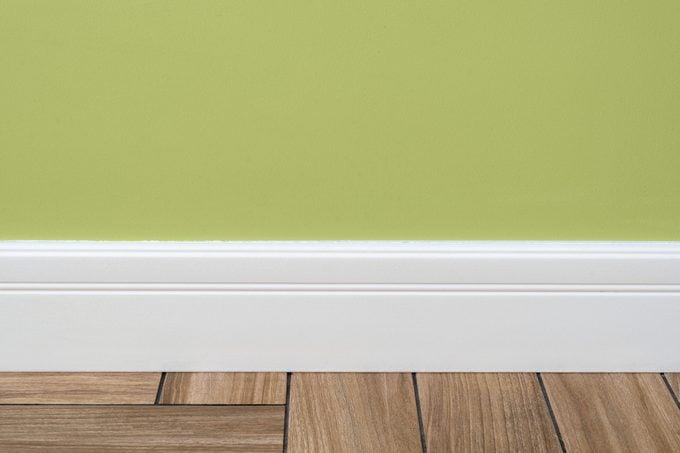
You already know Magic Erasers remove crayons from walls, but they’ll get rid of pet slobber, fingerprints, food splatters and general grime too. They work just as well on your kitchen’s tile walls as your living room’s painted ones.
It’s OK to use a Magic Eraser to clean baseboards made of painted wood or laminate, but if you have wood paneling, skip it. Deonarain again recommends testing a small area first because Magic Erasers could dull high-gloss paint or varnish.
Remove rust
Dripping faucets and leaky toilets can leave unsightly rust in your bathroom, and the longer you ignore it, the harder the rust will be to remove. Deonarain uses Magic Erasers to make quick work of these ugly water stains, and they’re safe for most bathroom surfaces (test a small area first!).
| ♦ Pro Tip |
| Fix leaky faucets and call a plumber if you have rusty water. You could be dealing with a corroding pipe. |
Brighten patio furniture
Whether it’s been gathering grease and dust in the garage or getting pelted with rain and snow, patio furniture is a great candidate for spring cleaning with Magic Erasers, especially when it comes to stubborn spots that a good wash with a garden hose can’t handle. Use the sponge on rust, grease, tree sap, tar and dead bugs.
Clean light switches and doorknobs
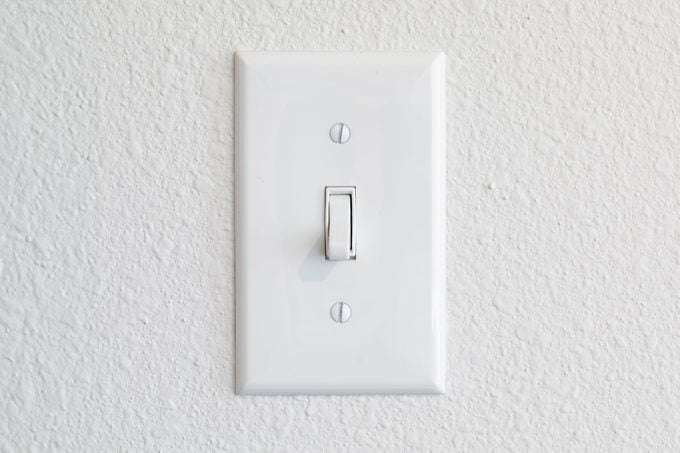
Grubby, sticky fingerprints on your high-touch surfaces got you down? A quick swipe with a damp, well-squeezed Magic Eraser removes all evidence. Magic Erasers need a little water to make scrubbing easier and safer for surfaces, but as a licensed electrician, I must stress that getting water in any electrical devices, such as light switches, is a huge no-no.
Why trust us
At Reader’s Digest, we’re committed to producing high-quality content by writers with expertise and experience in their field in consultation with relevant, qualified experts. For this piece on how to use Magic Eraser, Ally Childress tapped her experience as a seasoned cleaning reporter and licensed electrician, and then Ann Russell, TikTok’s “cleaning auntie” and the author of How to Clean Everything, gave it a rigorous review to ensure that all information is accurate and offers the best possible advice to readers. For this piece, we relied on reputable sources who are experts in cleaning and chemistry. We verified all facts and data and backed them with credible sourcing, and we will revisit them over time to ensure they remain accurate and up to date. Read more about our team, our contributors and our editorial policies.
Sources:
- William F. Carroll Jr., PhD, adjunct professor at Indiana University; phone interview, March 8, 2024
- Dan Deonarain, owner of Galaxy Maids; email interview, March 2, 2024
- Ann Russell, author of How to Clean Everything; article review, March 14, 2024


